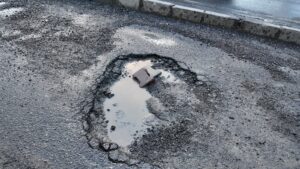Local authorities can still get important maintenance work delivered over the next few years despite a reduction in funding and a growing maintenance backlog, according to the Road Surface Treatments Association (RSTA).
Its advice to local authorities is to try and focus on proactive surface treatments maintenance programmes as much as possible backed up by the risk-based approach, to keep as many roads as possible in a good condition for longer.
Paul Boss, Chief Executive of the RSTA said: “It is not good that after the Comprehensive Spending Review and Budget in the autumn that highway authorities’ have had their capital highway budgets frozen until at least 2024/25, representing a real terms reduction of between at least 18-25%, despite the October Budget and Spending Review giving £2.7 billion over the next three years. The results of this year’s ALARM Survey shows that the maintenance backlog has risen again by a quarter in just 12 months. This is not good news for authorities making critical decisions on the state of the local network every day. The idea of a longer-term settlement is what we have been calling for in the highways sector, but it isn’t much use if there is not any more money to spend, especially at a time when costs are rising.”
“But regardless of how much money is available, the most efficient and sustainable way is going to be prioritising keeping the ‘green’ roads from slipping into ‘amber’ and the ‘amber’ roads from going into a red condition because that will always cost more money in the long-term as more roads head into the worst possible condition and therefore even more money needs to be spent on repairing them.”
The backlog of carriageway repairs to fix local roads in England and Wales has reached £12.64 billion, compounded by increased costs caused by rising inflation, according to this year’s Annual Local Authority Road Maintenance (ALARM) survey.
This is up from £10.24 billion last year and despite an increase in average highway maintenance budgets (up 4% on 2020/21), the proportion being invested in the carriageway itself is down and the reported backlog of carriageway repairs has increased by almost a quarter (23%) on last year’s figure to £12.64 billion – or £61,700 for every mile of local road in England and Wales.
Mr Boss added: “Last year we called for a national strategy for highway maintenance for local roads to ensure the sector can work collaboratively to deliver more preventative surface treatments. Now, it seems, this is needed more than ever.”






















